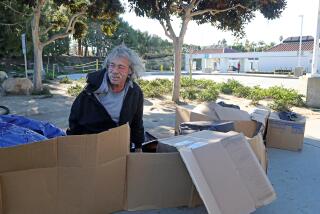San Diego bans e-scooters along the boardwalk from Mission Beach to La Jolla
SAN DIEGO — The San Diego City Council narrowly approved a ban Monday on e-scooters and other motorized devices along the boardwalk from Mission Beach to La Jolla.
The move follows a sustained public outcry from residents about the dangers of people whizzing along the boardwalk well above the 8 mph speed limit.
“This is clearly a public safety issue,” said City Councilwoman Barbara Bry, who has led the push for the ban for more than a year.
Councilwoman Jennifer Campbell also strongly supported the proposal at Monday’s public hearing.
“I almost got run over on Easter Sunday,” she said. “That was the last time I tried to walk on the boardwalk.”
Also supporting the proposal were Monica Montgomery, Vivian Moreno and Mark Kersey.
Council President Georgette Gómez, Chris Ward, Chris Cate and Scott Sherman voted in opposition.
Sherman suggested that traditional bicycles and scooters were as much of a hazard as the motorized devices.
“I think we’ve been missing the bigger discussion,” he said. “I don’t like saying motorized [scooters] are bad. Scooters you push are good.”
Scooter companies, such as Lime and Bird, will now be required to use geofencing technology to slow their devices down to 3 mph in the boardwalk areas to discourage riding. The prohibition will not apply to motorized devices for disabled individuals.
Areas off-limits to motorized riders include the boardwalks in Mission Beach, Pacific Beach, Mission Bay Park, Bayside Walk and La Jolla Shores.
Dozens of residents showed up to support the ban.
“I don’t know how to say this nicely or politely, but this is the most ridiculous thing I’ve ever seen in Mission Beach,” Jennie Lenhart said of the boardwalk situation.
“For this to have even happened in the first place, I’m appalled by the City Council,” she added. “It’s a matter of green is all I can say. I don’t see any sense in it.”
A number of residents said that increasingly people are riding their own electrically powered mobility devices, which can go faster than those of the regulated scooter companies.
“This is not so much about shared mobility devices as it is the onslaught of personally owned, privately owned motorized devices,” Paul Wilson said. “They’re a hazard. Motorized vehicles don’t belong out there.”
Gómez and others said they would not support the ban because it would be challenging to ensure people followed the rules.
“Even before this there are certain things that are prohibited that are still occurring because we’re not capable of enforcing,” she said.
The San Diego Police Department has not been able to enforce the 8 mph speed limit along the boardwalk using radar guns because the city has not done a state-required speed study for the area. Authorities said they have had to rely on identifying speeders visually.
Moment before the vote, Bry argued that the ban would make it easier for police officers to enforce the rules.
“The one thing about this ban is that it’s very clear cut,” she said. “The motorized device is either on the boardwalk or it’s not, so I think it actually makes it easier to enforce. We’re not in this murky area of how fast or slow is something going.”
Smith writes for the San Diego Union-Tribune.
More to Read
Sign up for Essential California
The most important California stories and recommendations in your inbox every morning.
You may occasionally receive promotional content from the Los Angeles Times.











